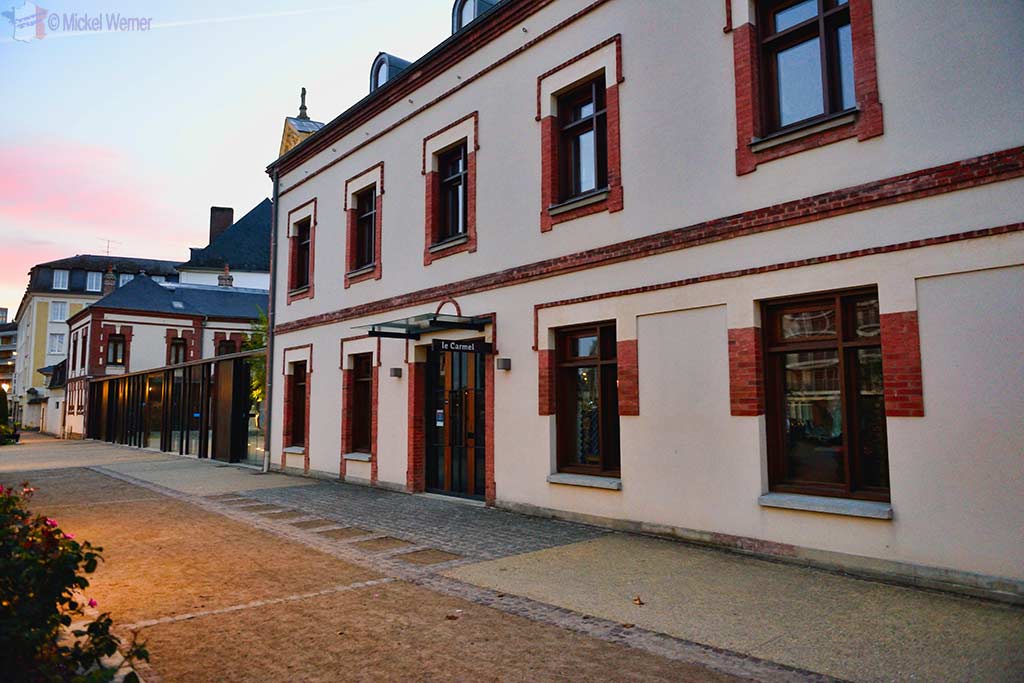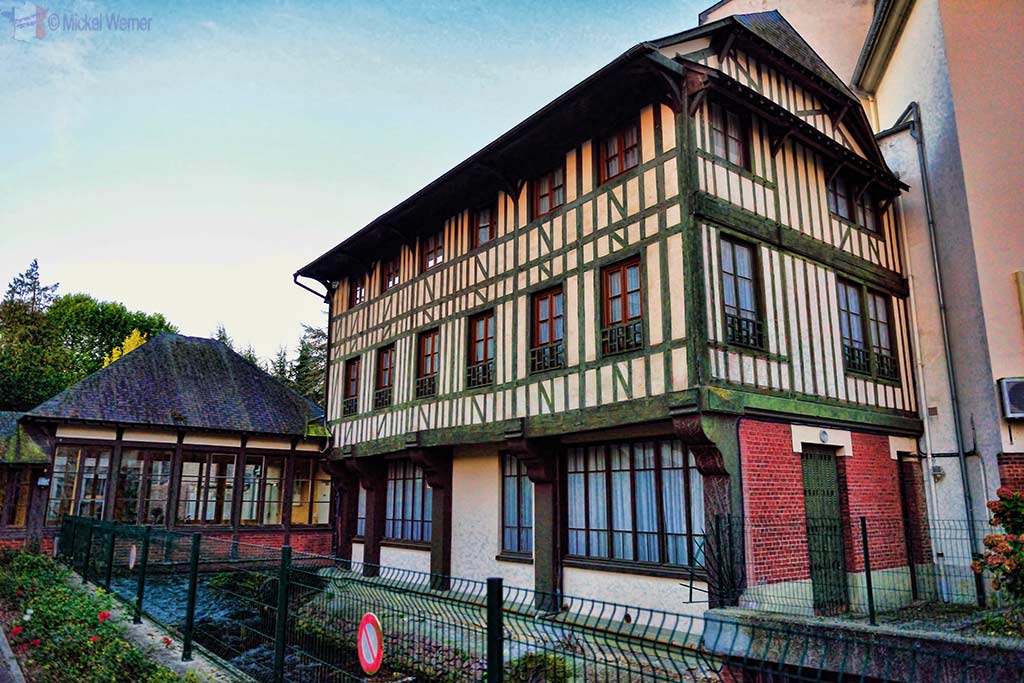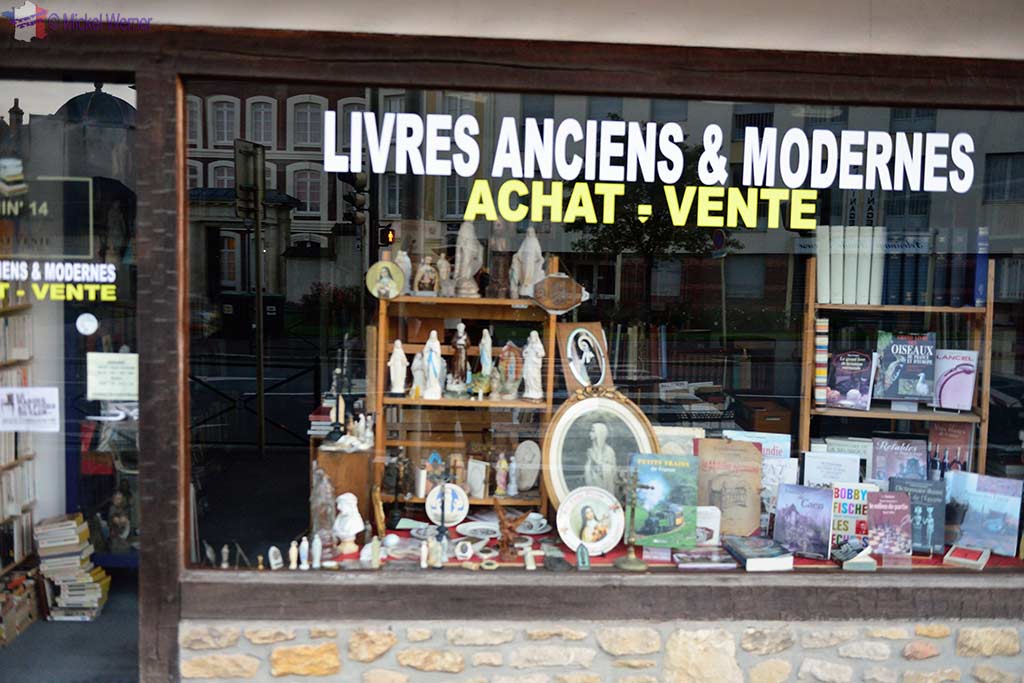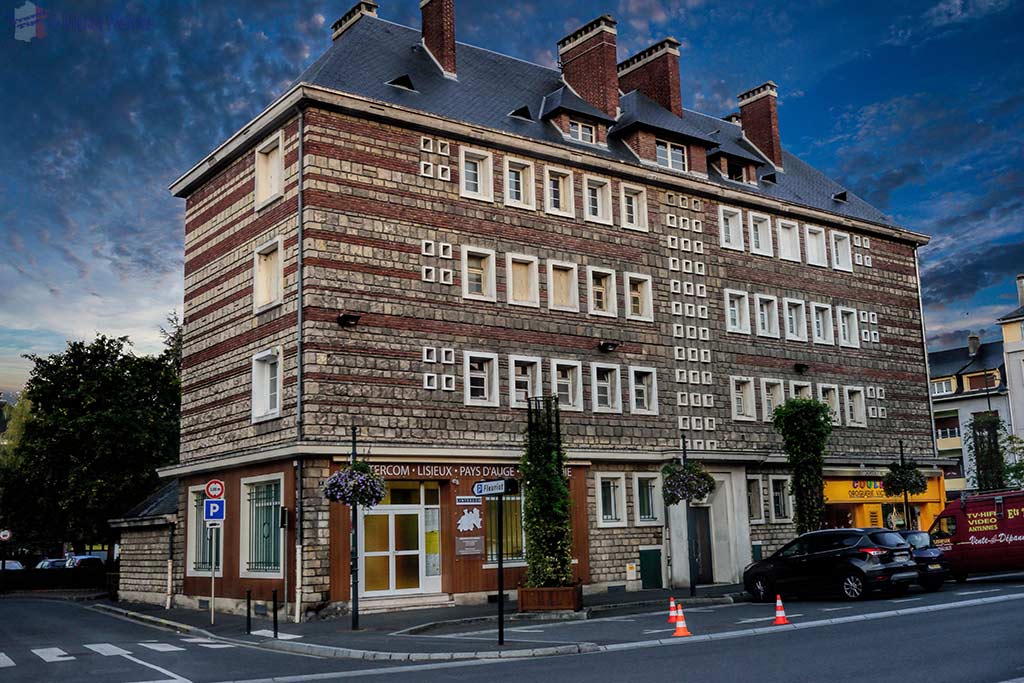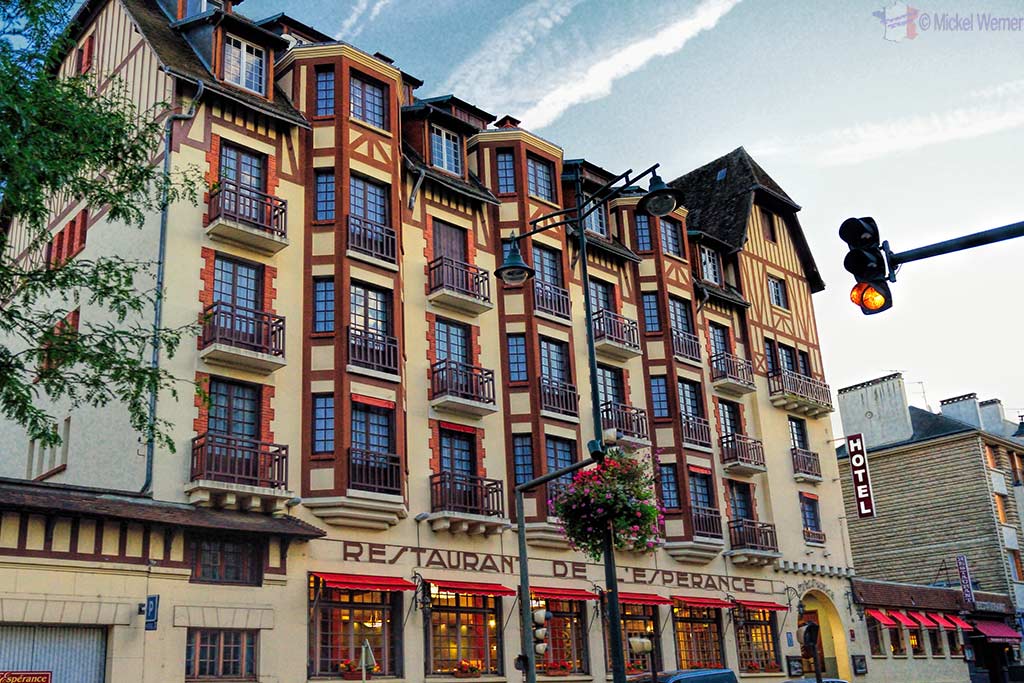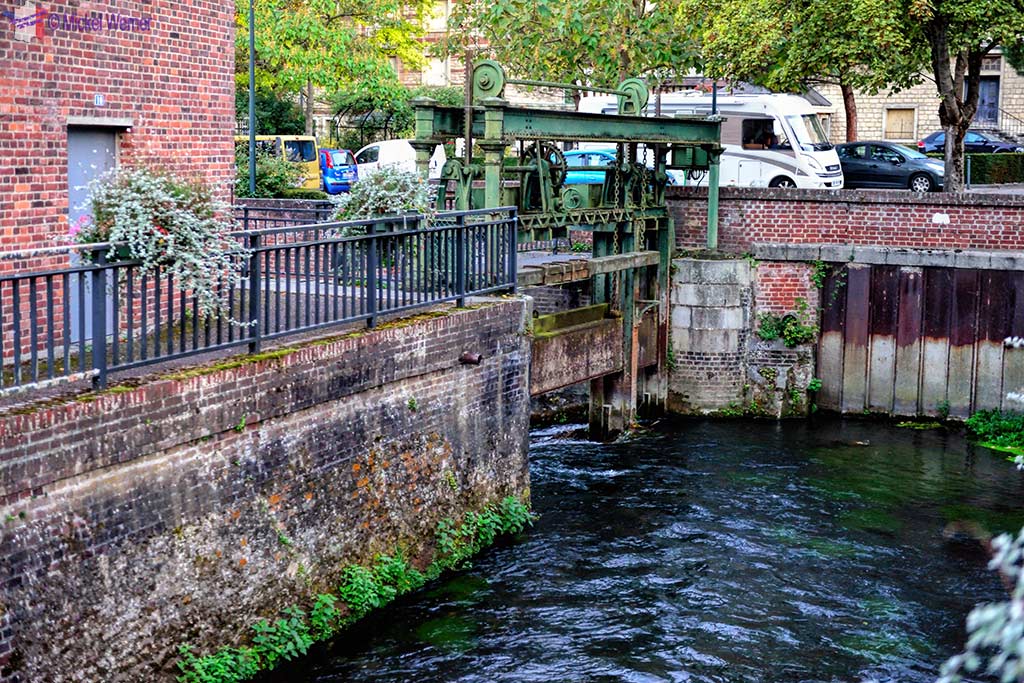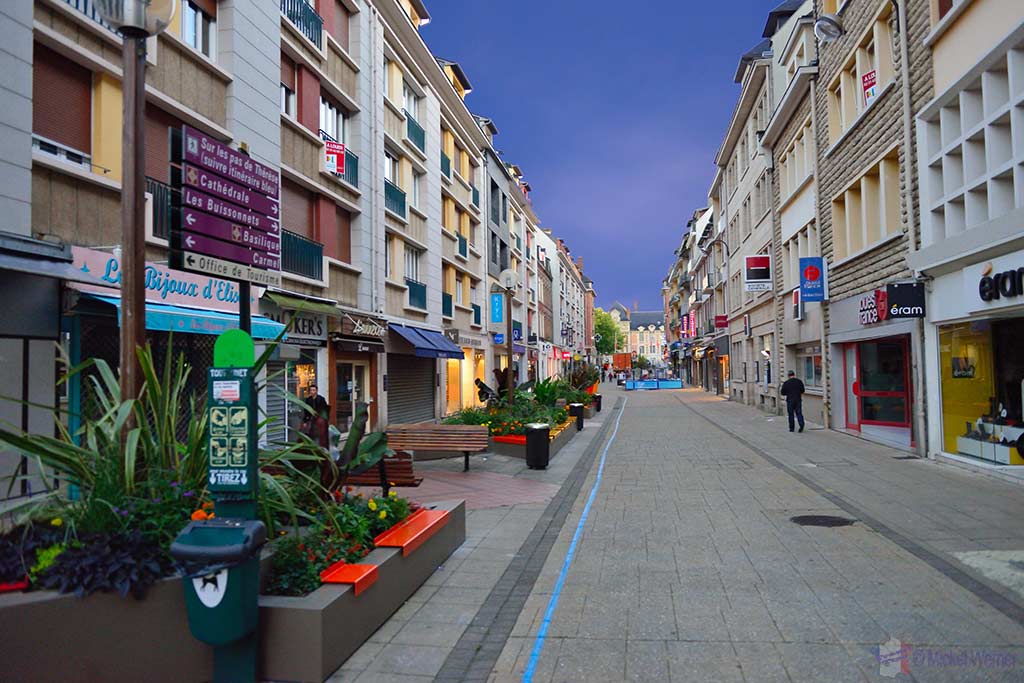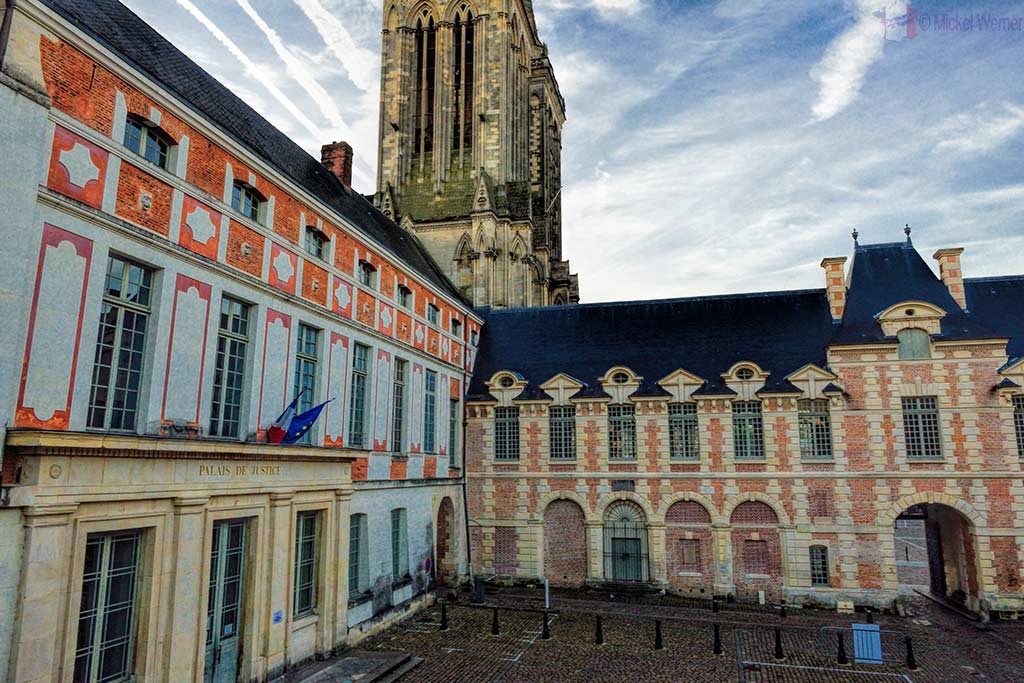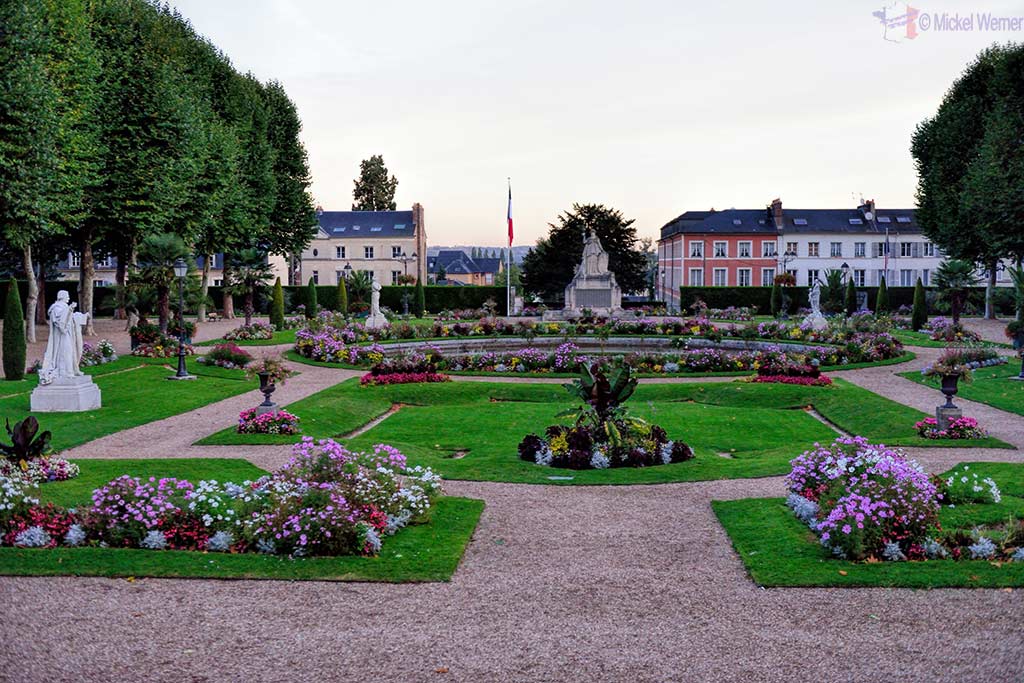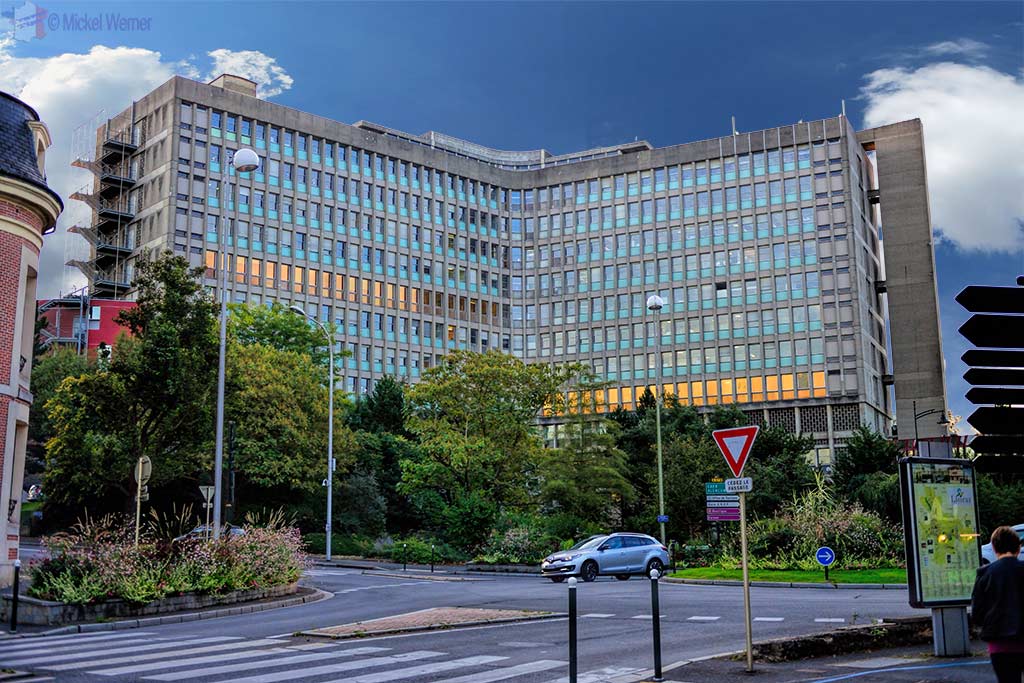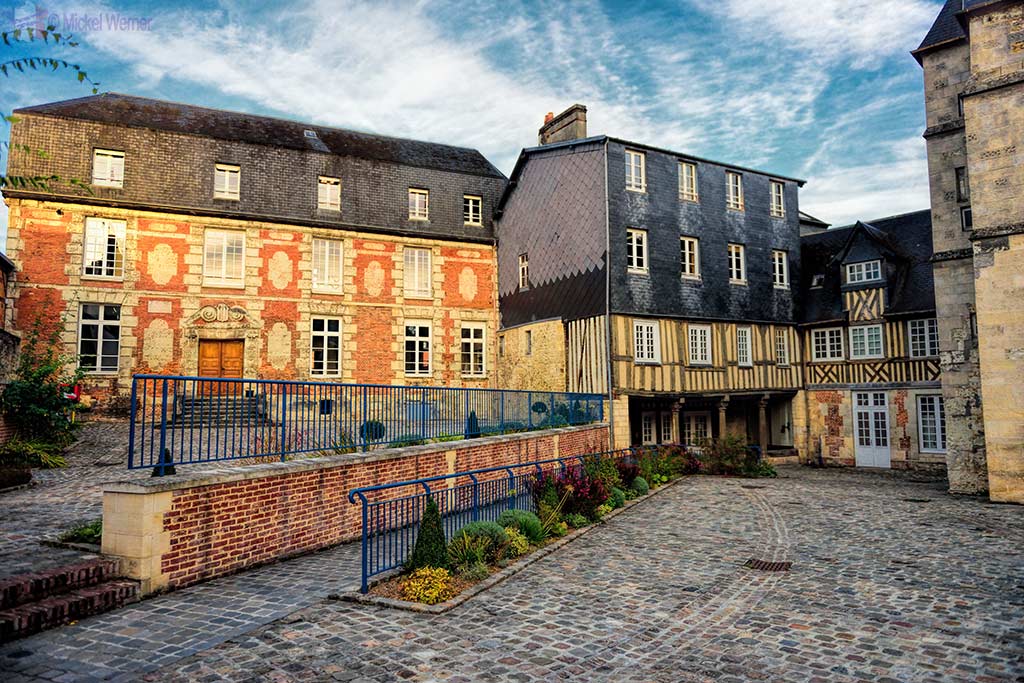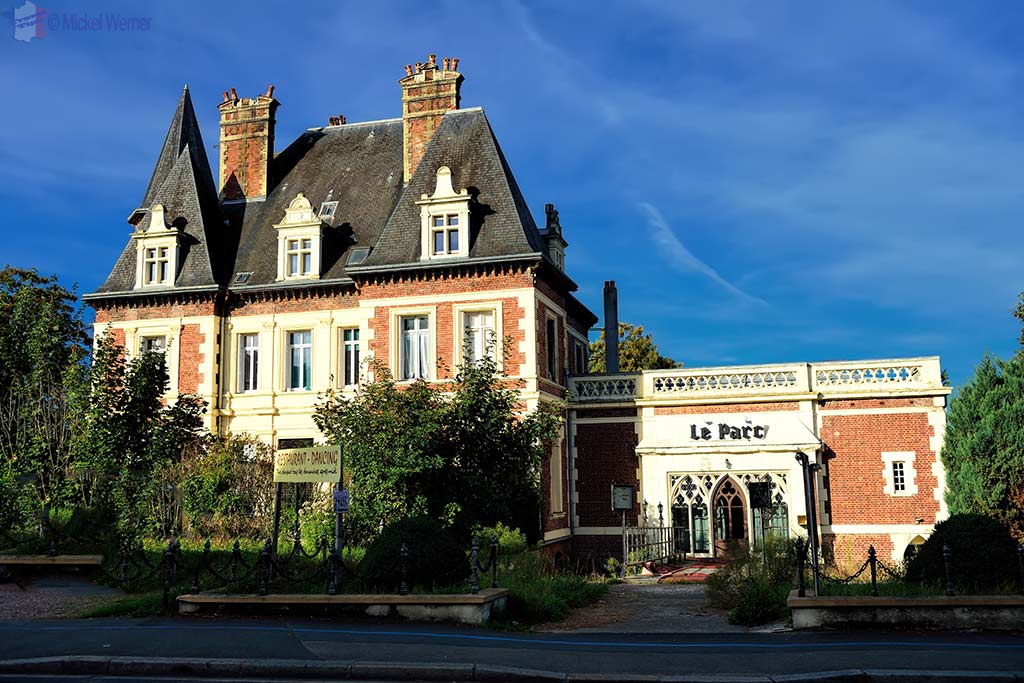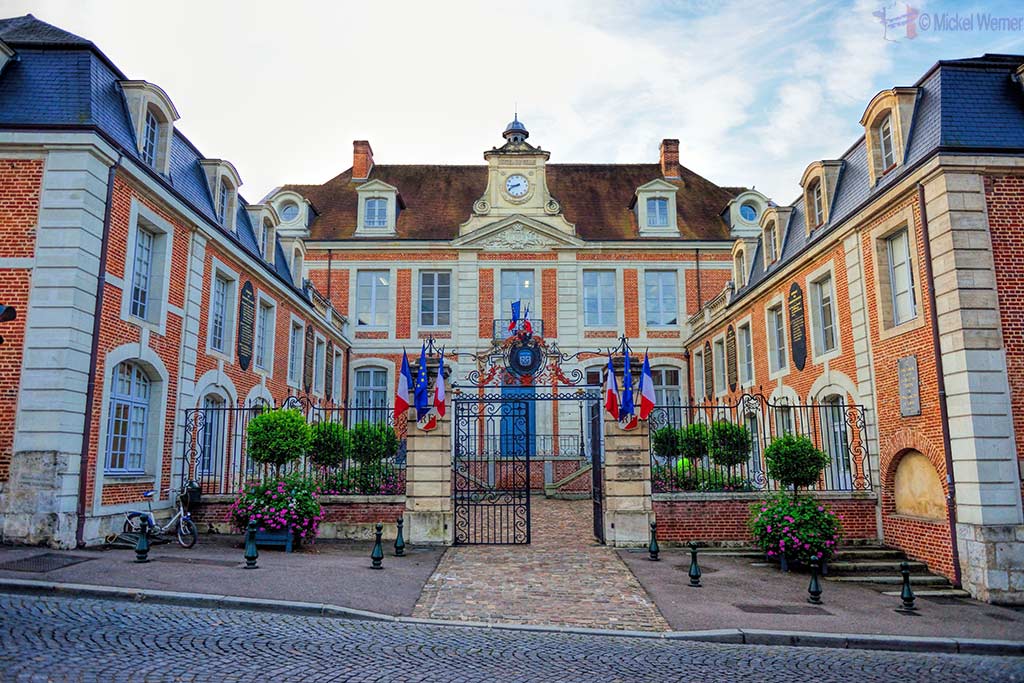Lisieux, in the lower part of Normandy, is an interesting and different kind of place to visit. It’s a very small city (or a very big town) with a population of some 22,000 inhabitants, but despite its relatively small size it contains an enormous basilica AND a big cathedral. Because of that, and the large population of Carmelite nuns and monks, the city is very religious. The city was indeed home to three saints (though all from the same family).
The city is old. It used to be the capital of the Gaulles until the Romans took over. It became an important Roman city (you can still see some of the Roman ruins), but it was only in the 4th century AC that it became more “local”. There is also a lot of German influence in the city.
Carmel Monastery
The Carmel monastery and adjacent pilgrimage buildings take up an enormous amount of space. The main part of the Carmel monastery is located opposite of the Tourist Office. The monastery itself was founded in 1838 and had as prominent resident the nun who would later become Saint Therese (also know as “Sacred Keeper of the Gardens” or “The Little Flower“).
The Carmelites religious order dates back to the 12th century with its head office in Rome, Italy. It takes up an important place within the Catholic church, and the Lisieux chapter so much so that Pope Jean-Paul II visited Lisieux and the Carmel monastery in 1980.
Carmel chapel
The small chapel of the Carmel monastery is worth a visit. It is surrounded by several buildings designed to accommodate and inform pilgrims coming on their pilgrimage (to the Saint Therese Basilica). Daily guided visits are available in different languages.
Several buildings accommodate the millions of pilgrims who come here every year and have been designed to facilitate wheelchairs and people who have problems walking.
These are just a few of the buildings reserved for this purpose.
When you walk through the town, especially close to the religious monuments, you will find many religious souvenir shops (just like in Lourdes, since this is the 2nd most visited pilgrimage city in France, 2nd only to Lourdes).
Visiting the city
Lisieux was very badly damaged during World War II, and it shows. Although some houses and buildings escaped the WWII intense bombardments, most of the buildings were destroyed.
Luckily they rebuilt the city with care. Although many of the “newer” buildings are just that; new, they at least show some character and are not just concrete blocks. The newer buildings are not unattractive though they can never replace the historical buildings the city had before WWII.
Some of the new buildings have been constructed in the old Normandy style with wood and bricks. They fit right in but you can see they are brand new.
Where ever you go in Lisieux, you will always run into rivers. There are 4 of them, the main river being the Touques and three rivers that flow into the Touques; the Orbiquet, the Cirieux and the Graindain.
There are even locks in some of the rivers used to maintain water levels.
You don’t need maps or even a GPS to discover the city. The Tourist Office has painted a nice blue line on all streets that have interesting things to see.
TIP: When visiting the city, best is to park close to the Tourist Office and visit the city on foot from there. The Blue Line starts at the Tourist Office.
Start at the Tourist Office and just follow the blue line. It will take you through the city and this way you will not miss anything that there is to see. Even in a wheelchair, it’s easy to follow the blue line (there is only one slightly climbing section, the rest is flat).
The main square of Lisieux contains the Saint-Pierre cathedral, courthouse and post office. All three buildings are built against each other.
This photo was taken from the courtyard inside the three buildings. Behind is the “bishopric garden” (in French “Jardin de l’eveche“).
The gardens are slightly elevated so you need to access them using the stairs. In the gardens you will not only find many plants and trees but also several statues and a pond.
At the far end you will find a big statue dedicated to the people from Lisieux who have died during World War II.
The Saint-Pierre cathedral is narrow but very long, taking up the rest of the rather large block. It ends with its own little park.
Click here to read and see more of the Saint-Pierre cathedral.
Walking through Lisieux (following the blue line) you see many different kinds of buildings. From regal buildings like the manor above (a private dwelling), to…
… to this very modern building located right in the city centre. The building in question is the Lisieux hospital. But you can still see some very old houses in the city….
…. These are some very old houses that have escaped the WWII bombardments. Notice how crooked the middle house is! It is not an optical illusion but the house is very much like the Tower of Pisa in Italy. Even the floors are slanted.
These old buildings are part of the communal social centre. They are located close to the cathedral.
This was once a restaurant, located on the last partion of the blue line. The restaurant was inside a private chapel, but unfortunately the place is gone out of business.
Saint-Jacques church
Taking one of the side streets (not following the blue line), I stumbled upon this enormous church.
This is the Saint-Jacques church.
The Saint-Jacques church was built in the 15th century but suffered a lot of damage towards the end of the World War II.
Today it no longer functions as a church but instead is used as an exhibition hall. When there are expos, the church can be visited (although quite bare inside).
The City Hall (Mairie) of Lisieux is located in a nice castle-like building. A “Hotel Particulier” (in English a large townhouse) built in 1713 by Charles Le Bas de Preaux, advisor to King Louis XVI and taxman for the Rouen region.
Summary
Obviously for religious people, this is the place to visit, but also for people just interested in history and beautiful buildings, a visit can be of interest.
The fact that you don’t have to worry about finding places thanks to the blue line makes it easy to visit. You’ll not be spending days here, count a few hours to visit all interesting places, with as prime objective to visit the basilica.
Related Posts
- 10000
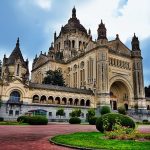 The Basilica of Saint Therese in Lisieux is one of those buildings that is definitely worth a detour, even one of hundreds of kilometres. It is France's second most visited pilgrimage site (after Lourdes), with 2 million visitors per year. It could be qualified in one word: imposing! The Basilica is…
The Basilica of Saint Therese in Lisieux is one of those buildings that is definitely worth a detour, even one of hundreds of kilometres. It is France's second most visited pilgrimage site (after Lourdes), with 2 million visitors per year. It could be qualified in one word: imposing! The Basilica is… - 10000
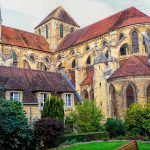 Lisieux is a very religious city with, for a small city, both an enormous basilica AND a big cathedral. Lisieux was the home to three saints, which might explain the presence of so many big religious buildings and institutions (like the Carmel monastery). But the Saint-Pierre cathedral is not exactly an…
Lisieux is a very religious city with, for a small city, both an enormous basilica AND a big cathedral. Lisieux was the home to three saints, which might explain the presence of so many big religious buildings and institutions (like the Carmel monastery). But the Saint-Pierre cathedral is not exactly an… - 10000
 Transport Getting There By Air If you plan to come by air, you'll need to fly to the Deauville airport that has some flights from the UK. Deauville is a 30 minute drive to Lisieux by car. Within Lisieux Lisieux is a reasonable bus system in case you want to discover…
Transport Getting There By Air If you plan to come by air, you'll need to fly to the Deauville airport that has some flights from the UK. Deauville is a 30 minute drive to Lisieux by car. Within Lisieux Lisieux is a reasonable bus system in case you want to discover…


